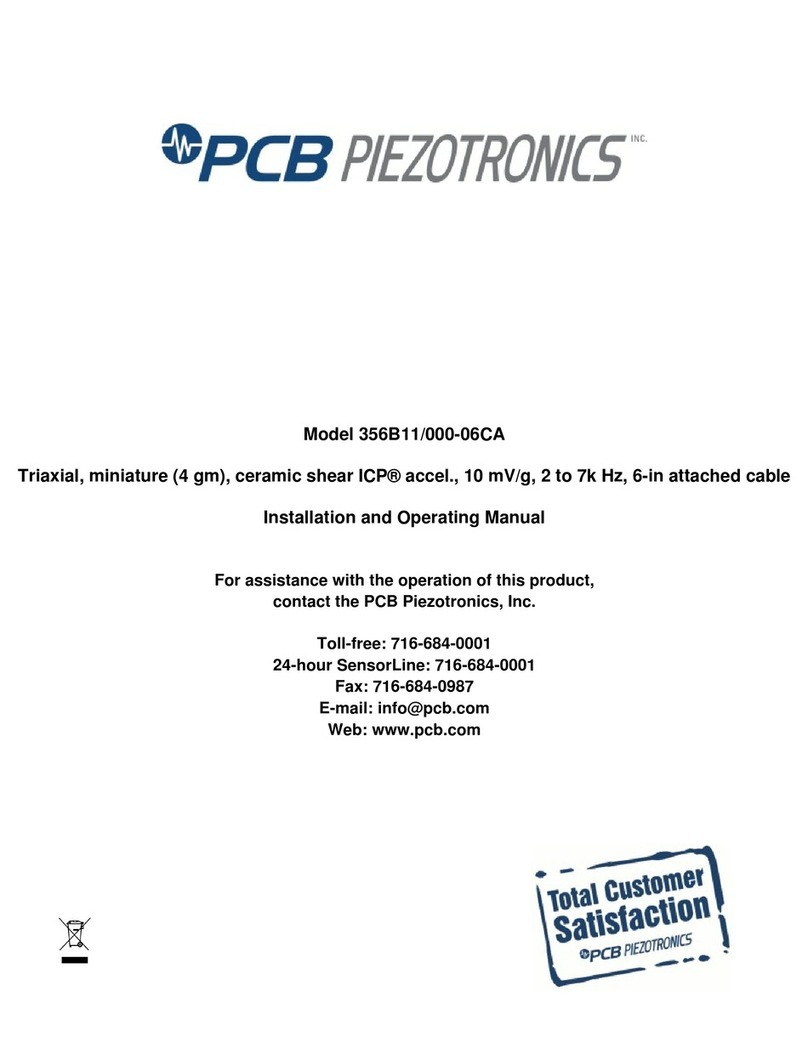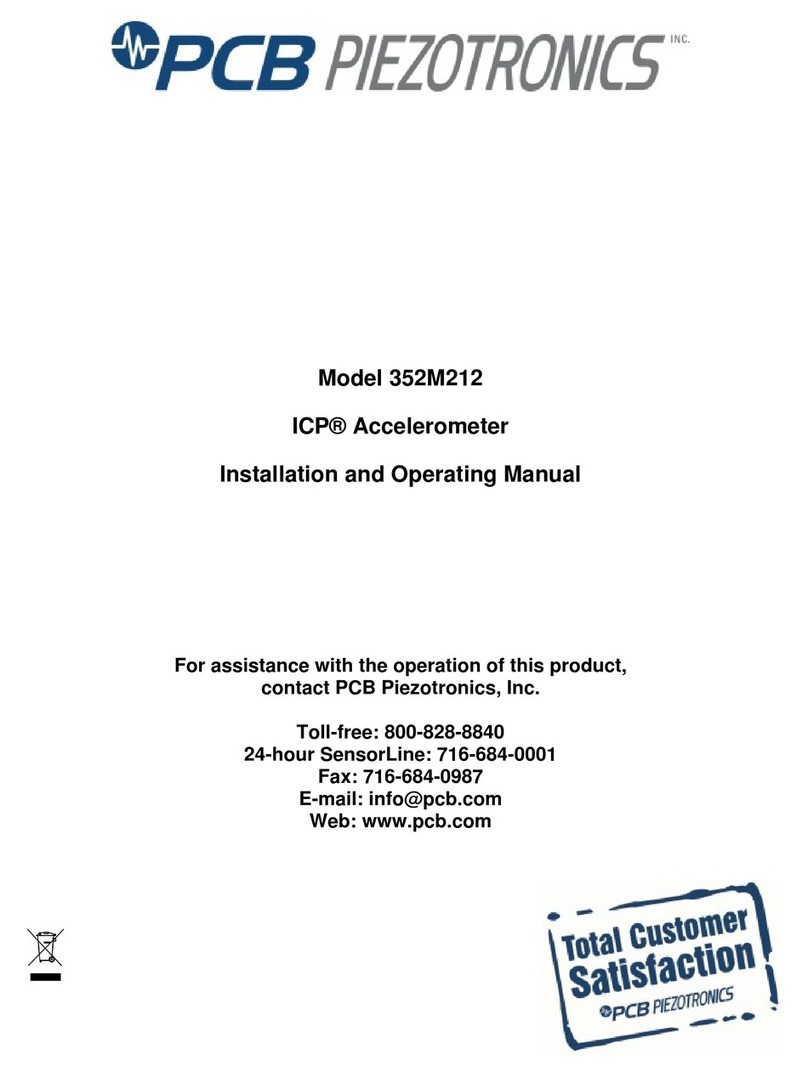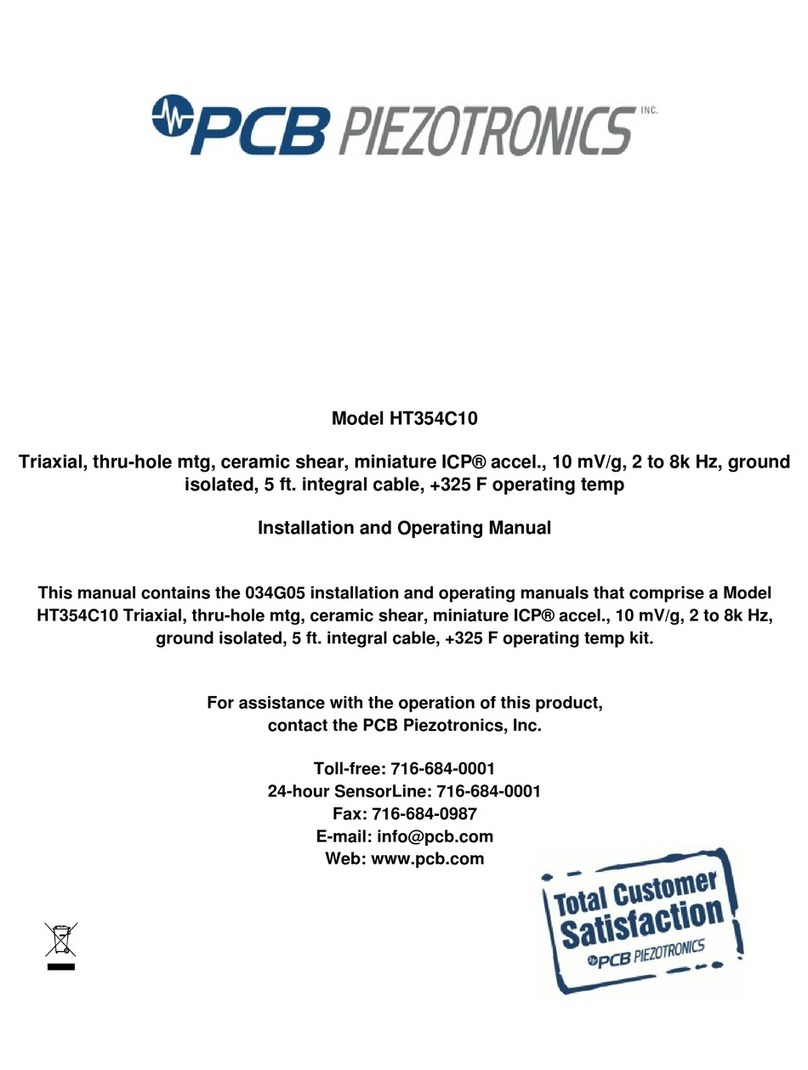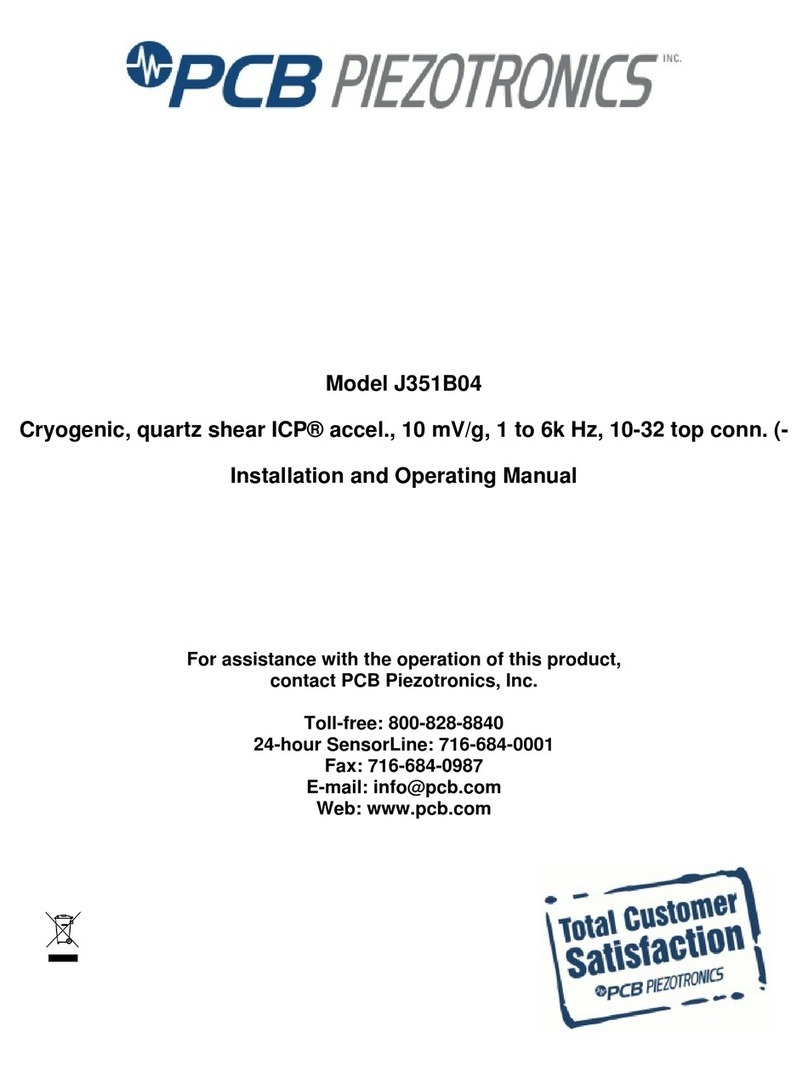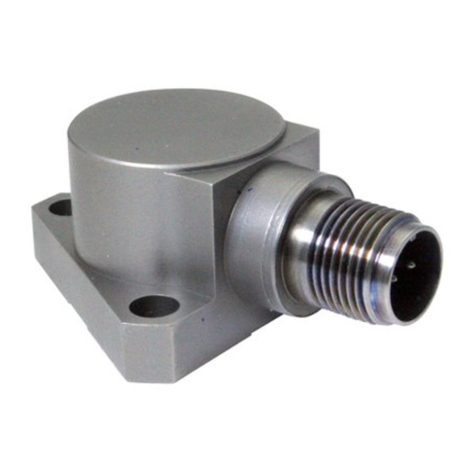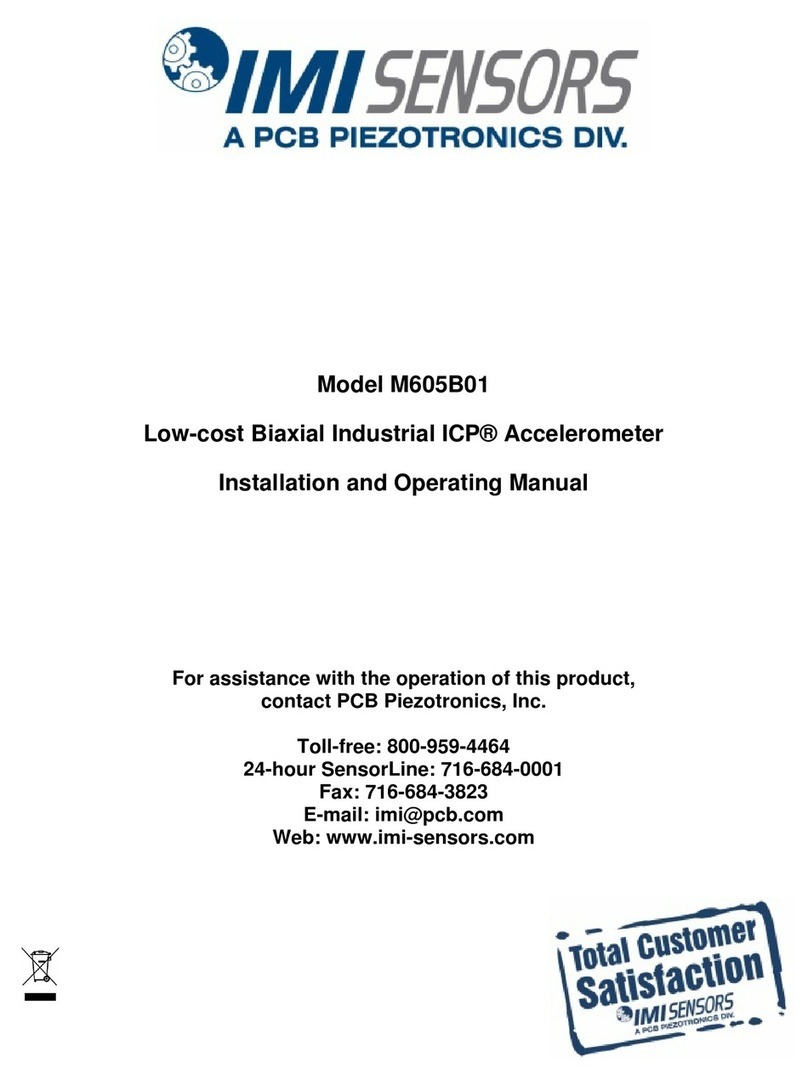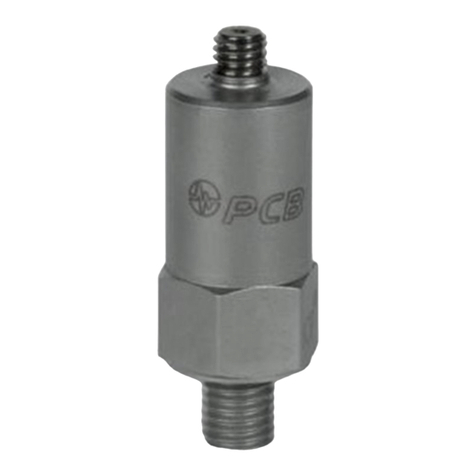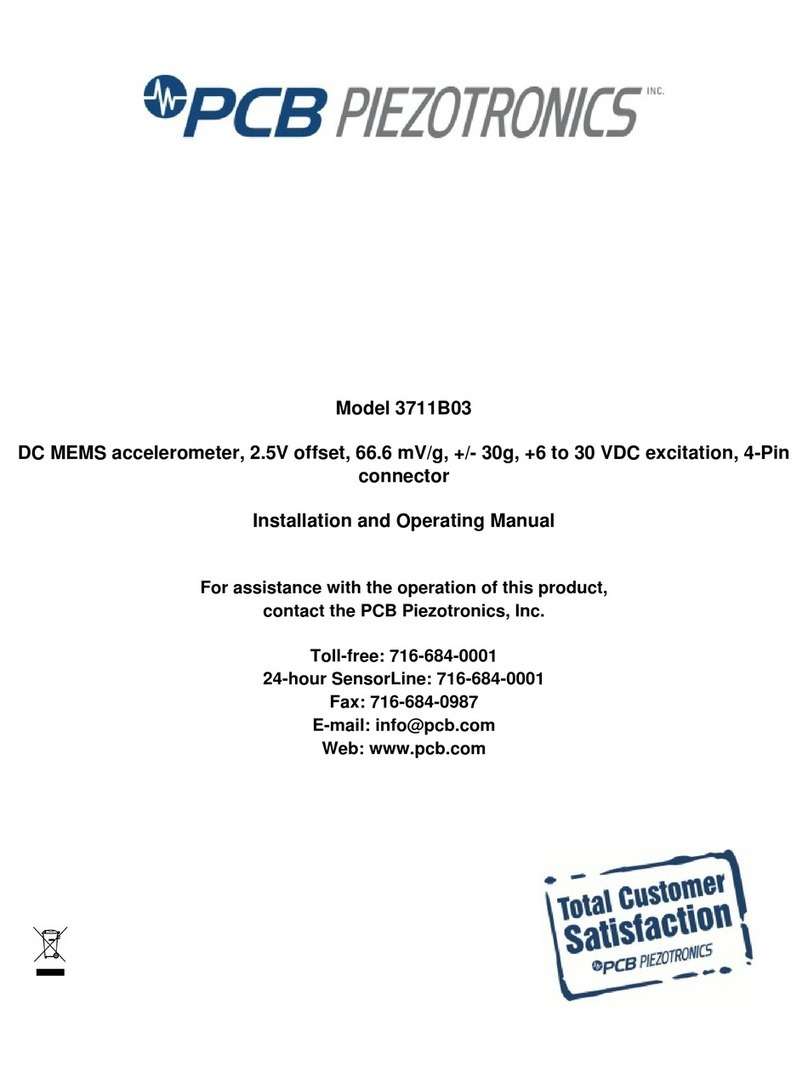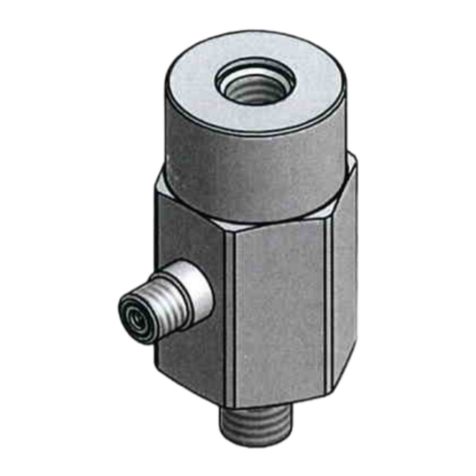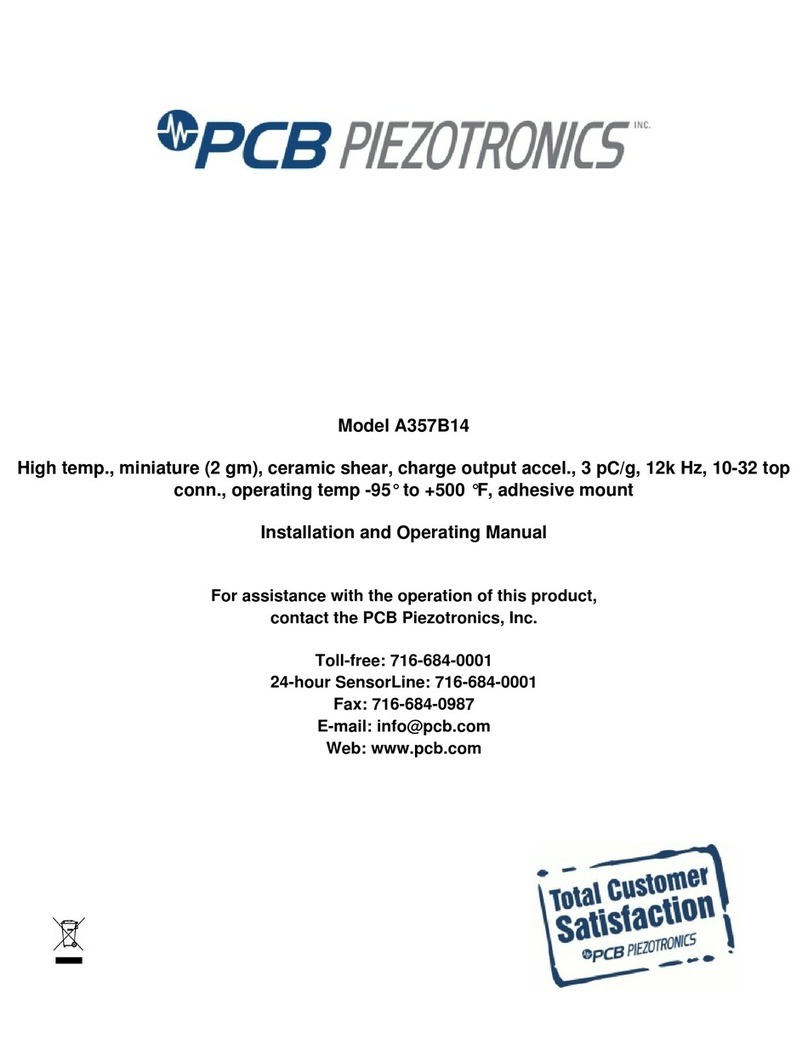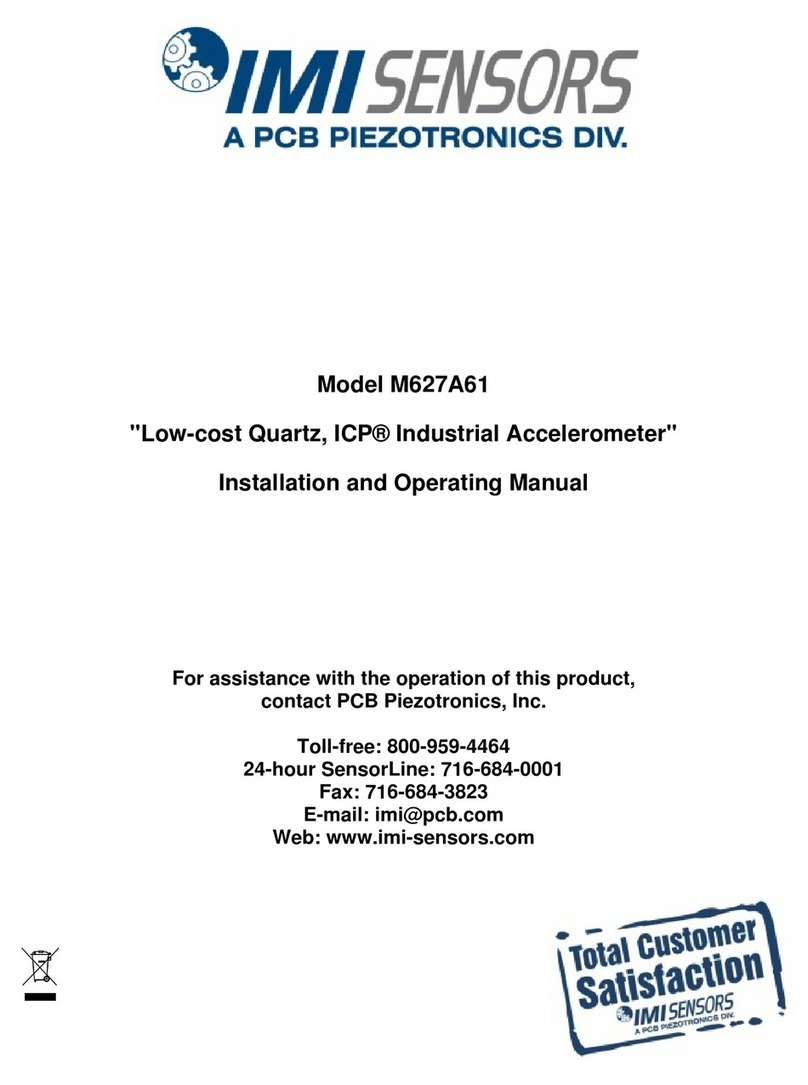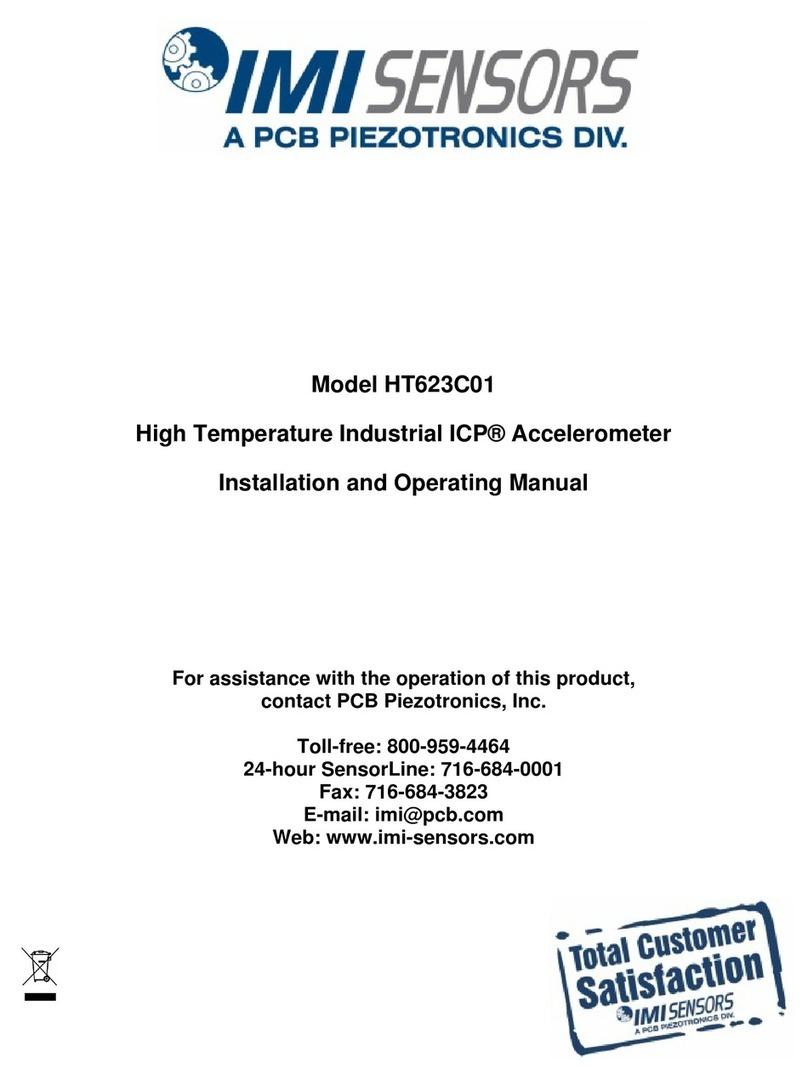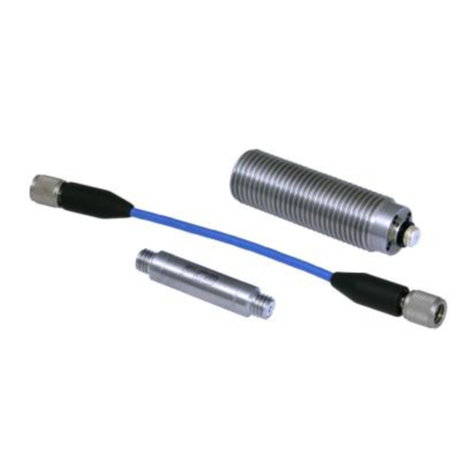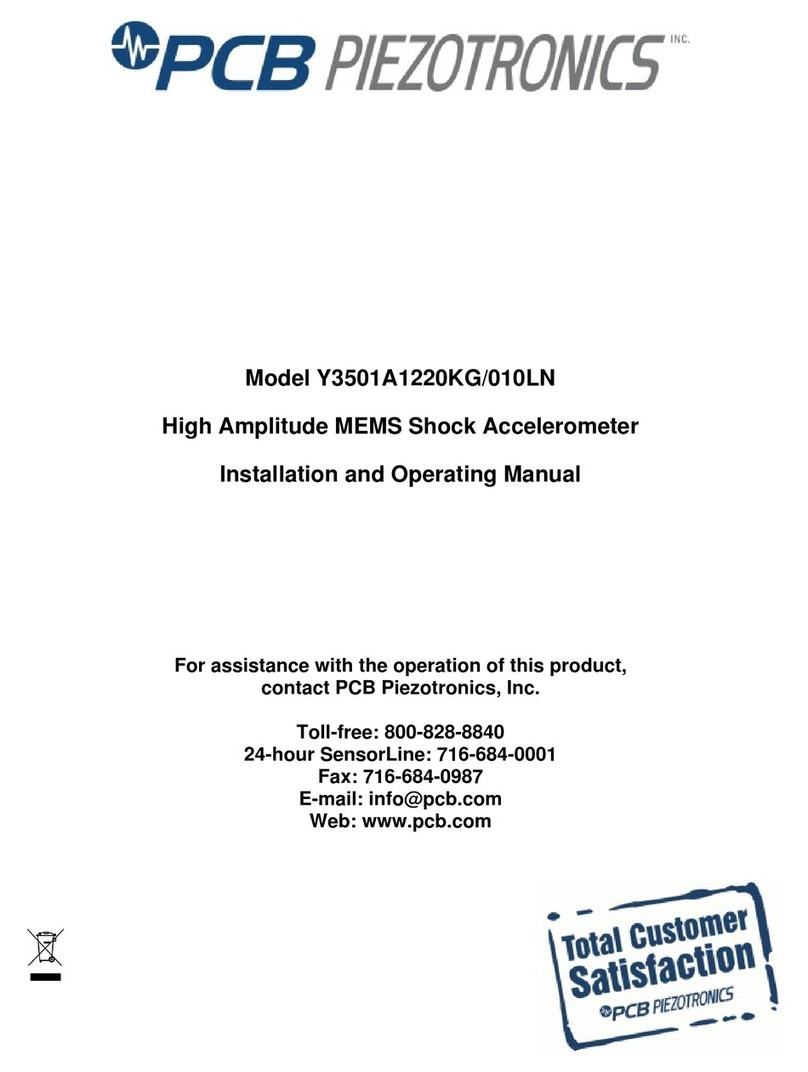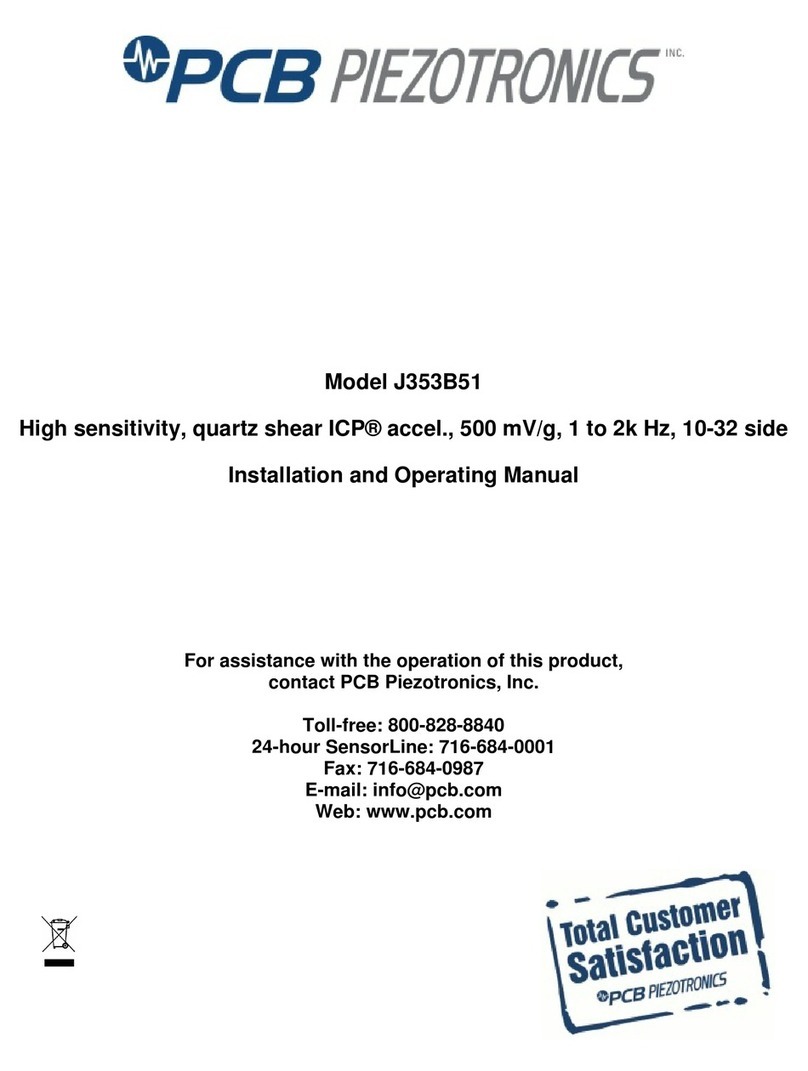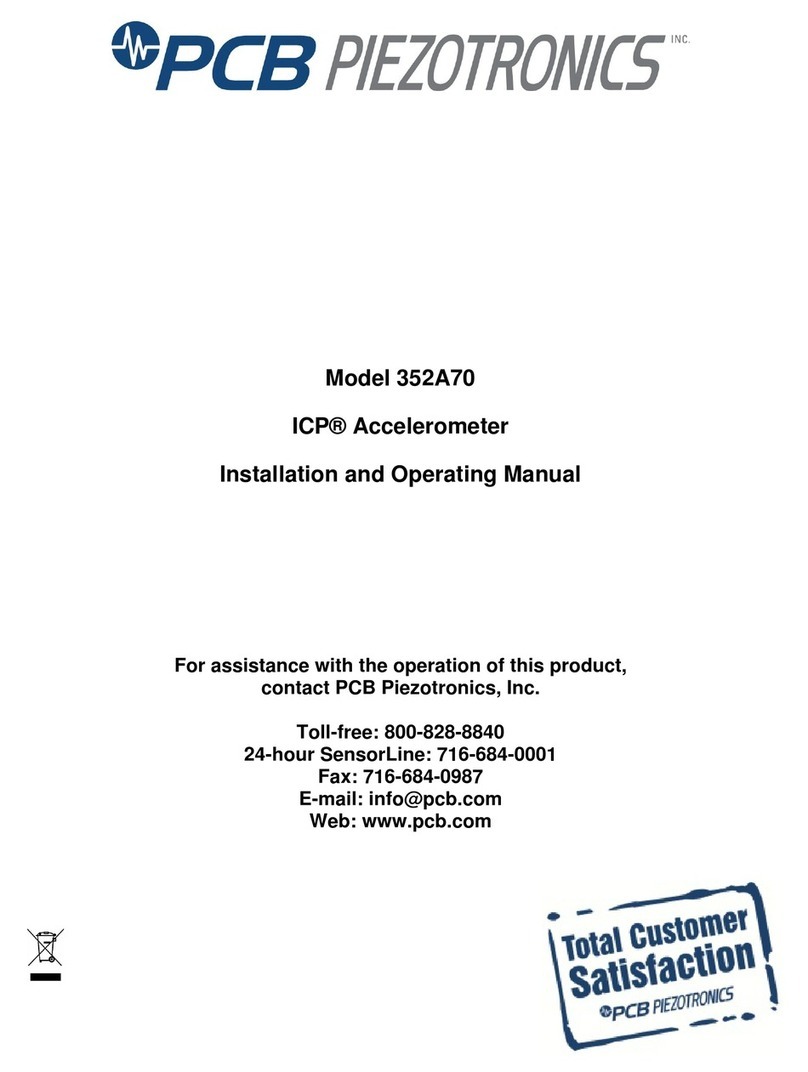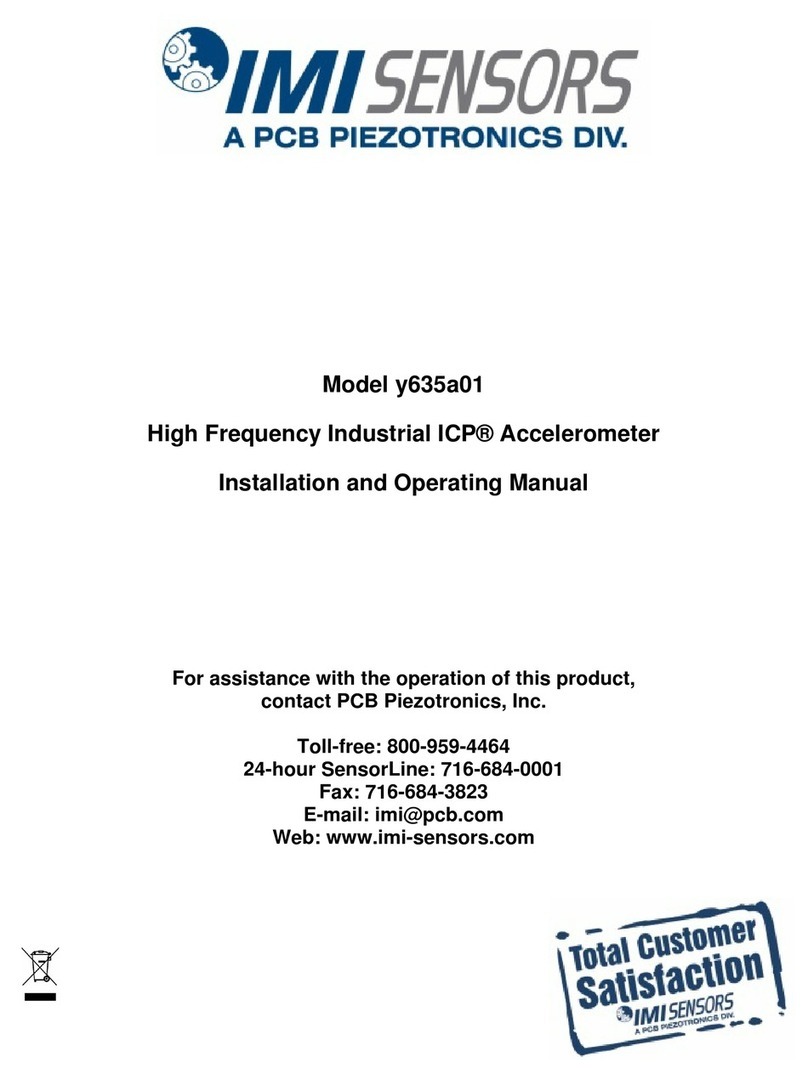
Manual Number: 43331
Manual Revision: B
3500/3600 Series Piezoresistive Shock Accelerometer Operating Guide
performed. These are violent events. Because of the critical
nature of these and similar test applications, PCB MEMS DC
Accelerometers have been designed and manufactured with the
following common characteristics:
Rugged, all-welded, titanium housing, or ceramic housing,
insures reliability and durability in demanding
applications and environments.
The MEMS sensor includes over-range stops set at
approximately twice the full range.
Gas damping attenuates unwanted high-frequency output.
5.0 Sensor Installation
The 3500/3600 Series DC Accelerometers are available in
various forms. Review Outline Drawings and/or Installation
Drawings provided with sensors for specific details and
requirements related to hardware, mounting, materials,
packaging, cabling, etc.
For certain applications not requiring a signal cable, surface
mount technology (SMT) style sensors are available upon
request. Contact PCB Application Engineers to discuss
specific application requirements.
When choosing a mounting method, it’s important to take
characteristics like location, temperature, environment, and
surface condition into consideration. The sensor must be
mounted on a clean, flat surface to avoid the potential for
misalignment and/or limited contact with the mounting surface
which may diminish the sensor’s performance. Mounting
surface flatness, finish & preparation requirements are
indicated on the provided Sensor Installation Drawing.
Mounting the sensor will require a clean contact surface to
avoid small particles or debris trapped between the mounting
surface and sensor that can preload the accelerometer case
with unwanted static strain, possibly resulting in zero-shift
during a shock measurement.
Prepare a smooth, flat mounting surface and, if applicable,
drill and tap mounting holes according to the Sensor
Installation Drawing.
Wipe clean the mounting surface and, as appropriate,
apply a thin film of couplant, such as machinist oil, to
enhance transmissibility by filling small voids in the
mounting surface and increasing mounting stiffness.
Hand-tighten the sensor (or mounting hardware, as
appropriate), then torque down per the Sensor Installation
Drawing. In extreme conditions it’s recommended to
check the mounting torque after each measurement. It’s
also recommended that a thread locking adhesive be
applied to any threads, if applicable.
Ceramic LCC (leadless chip carrier) packages available in this
series are designed to be installed on circuit boards with
conventional surface mounting techniques. An under-fill epoxy
is recommended to be used for additional mechanical strength.
6.0 Power
Normally PR devices are powered with regulated excitation,
since the sensitivity is proportional to input voltage. PCB
MEMS sensors generally exhibit good proportionality (due to
minimal self-heating of the comparatively high-resistance
elements). Still, it is generally recommended to obtain the
calibrated sensitivity using the intended excitation voltage. In
integrated applications, in which the data acquisition is
powered by the same voltage that supplies the bridge, it is
possible to reduce the effect of variations in excitation on
overall system sensitivity by using the excitation voltage as the
reference for the data acquisition.
7.0 Typical Measurement System
The output from the sensor is typically routed to a bridge
conditioner then an oscilloscope or various data acquisition
instruments. Consult PCB Application Engineering for
additional signal conditioning options. To take advantage of
the DC response of the accelerometer, the readout device must
be in a DC coupled state. Consult the appropriate manufacturer
or product manual for your readout device for details.
8.0 Sensor Verification
Generally the ZMO of a PR transducer is a good measure of
the health of the transducer. Input Resistance (from Red to
Black) or Output Resistance (from Green or Yellow to White),
is less commonly used to check the condition, since resistance
changes with temperature. A thorough check of the health
(suggested both before and after an expensive test) must
include calibration of the sensitivity.
In some laboratories which use piezoresistive transducers, it is
customary to check the continuity and gain of the conditioning
and data acquisition system using a technique called “Shunt
Calibration”. By temporarily unbalancing the bridge with a
shunt resistor placed in parallel with a leg of the bridge
(usually between the “+ Sig” wire and either the “+ Exc” or “–
Exc”), dc shifts of the offset are created. Whereas the process
does not calibrate the transducer, it is a check of system gain,
with accuracy of the resultant dc shift in output dependent on
the degree that the resistances of both the leg of the bridge and

